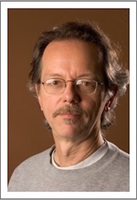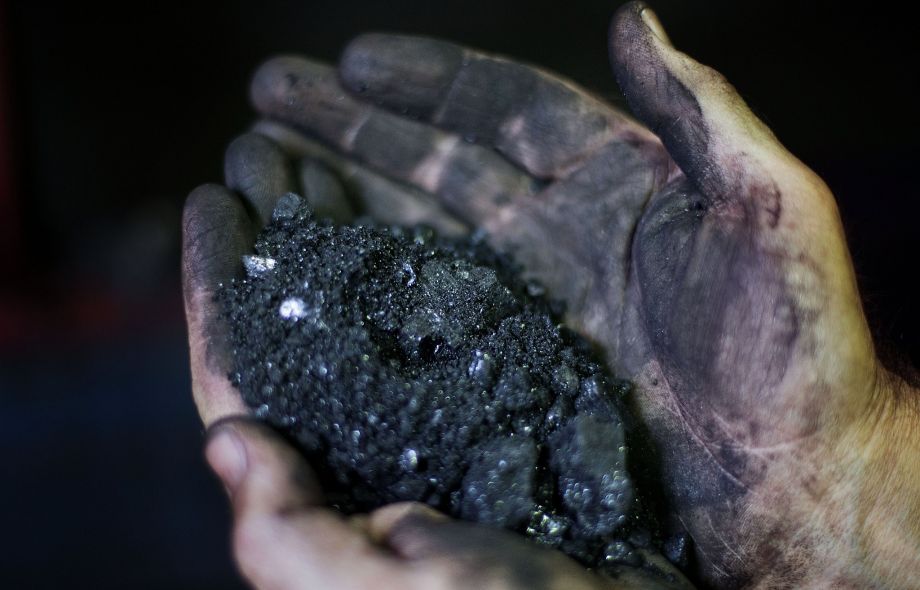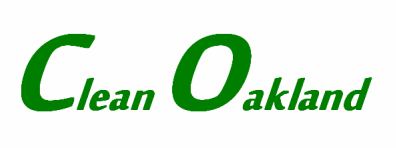|
Updated: 01/27/2016 09:19:56 AM PST
Coal cargoes would not be containerized The author of the Jan. 15 article, "Coal shipments not dangerous to health," is clearly mistaken. There is indeed "a documented human exposure mechanism that delivers a sufficient amount of the agent (coal dust) by uptake through ... the inhalation pathway." This results in silicosis (black lung disease) in coal miners and asthma and other diseases in people less intensely exposed. Just as airborne coal dust gets into the homes of people living near the rail lines, the tinier particles get into their body. Neither the coal companies nor the Oakland developers dispute that fact. This is demonstrated by the application of surfactant by the former and talk about the use of (nonexistent) enclosed coal cars by the latter. The letter writer seems to think that the coal will be in containers. The entire purpose of the Oakland Bulk and Oversized Terminal is to handle bulk commodities and oversized goods that cannot be containerized. Otherwise, the containers with these materials would be loaded onto ships at the Port of Oakland like any other cargo, and the new terminal would not be necessary. Communities up and down the U.S. West Coast have rejected similar coal deals. Therefore, the coal companies are hoping to manipulate the disadvantaged population of West Oakland into becoming their sacrifice zone. The children there are especially sensitive receptors because so many already have asthma. I suggest, as the evidence at City Council meetings demonstrates, that Oaklanders are simply not that gullible. We cannot and will not be fooled by glib assurances. Can we please engage in an informed and honest discussion of this matter and not a misleading one? Peoples' lives and health are at stake here if you haven't noticed. A simple computer search on "coal in Oakland" will demonstrate how overwhelming the opposition is to this outrageous idea that a tiny handful of people want to foist upon us. We won't let it happen. David F. Gassman Oakland http://www.contracostatimes.com/letters/ci_29439311/piedmonter-montclarion-letters-coal-cargoes-would-not-be
0 Comments
 \By postnewsgroup Posted January 22, 2016 12:00 pm By Brian Beveridge The Oakland City Council is concerned about banning coal operations at their new Oakland Global Logistics center – because their master developer Phil Tagami is threatening to sue the city or quit the project if the council uses its legal authority to ban coal under health and safety codes. Of course, Tagami can sue the city for interfering with his business dealings, but courts generally favor cities where health and safety of their citizens is concerned. The burden would be on Tagami to show that his coal venture would not create additional health impacts on the already overburdened West Oakland neighborhoods downwind of the Oakland Global Logistics center. In his threats, Tagami has little to gain and everything to lose. The threat is classic political theater and pure smoke. In the deal he signed with the city, he plays two roles. First, he is a fee-for-service construction manager for the site preparation phase, called horizontal development. Once the utilities and roads are rebuilt, Tagami becomes the master tenant and property manager for the next 66 years. In his fee-for-service role as construction manager, Tagami’s company, CCIG, gets 4 percent of the horizontal development budget, plus other reimbursable costs. According to the Oakland Office of Contract Compliance, phase one is about 60 percent complete, and the city’s published budgets estimate the total cost at around $450 million. Tagami’s fee, then, is in the neighborhood of $22.5 million for just phase one. No business man walks away from that kind of money. Tagami’s threat to quit, with millions of dollars left on his contract, is just empty words. So what if Tagami finishes phase one, gets his $22.5 million, and then quits? The city would be without a master developer. The truth is, once the old army base is cleaned up and the roads and utilities are upgraded, the city doesn’t need a master developer, a master tenant, or a master anything. In phase two, Tagami becomes a glorified property manager taking profits the city could retain by managing its own property. The Port of Oakland abandoned the master developer idea years ago and now leases construction-ready property to private development project that suit the Port’s strategic goals. Oakland is positioned to do the same thing, without Phil Tagami or CCIG. Once the old army base is up to code, there will be no shortage of logistics companies lined up and eager to build facilities at one of the only deep-water ports on the West Coast. His lease deal notwithstanding, Tagami is hardly the only game in town. The Oakland Global project includes seven separate development areas, four of which already have independent development projects in the works. CASS Metals and California Waste Solutions, two large recycling companies eager to vacate the West Oakland community, intend to build modern facilities in the North Gateway area adjacent to EBMUD. Oakland Maritime Support Services (OMSS) will break ground this year on a privately funded trucking center and office building at the corner of West Grand Ave and Maritime Street. ProLogis, a global logistics developer is eager to begin construction on its modern distribution center in the Central Gateway, and Viridis Fuels has a lease to build a biofuels plant on another parcel near EBMUD. In all, more than 95 acres of the project are already committed to private investment unrelated to Tagami or CCIG. Tagami has his own interests in development of a warehouse district in the East Gateway and a short-line rail operation. These interests and his property management fees will bring him millions of dollars in profits over the next 66 years. He would be a fool to quit now, but the city might be foolish to try to stop him. As Mayor Schaaf has said, Tagami has been handed the opportunity of a lifetime. Several years ago Tagami told me personally that the army base project would be worth more than a billion dollars and would be both his retirement and his legacy. It is unlikely he would walk away from all that. He should set hubris aside, find some gratitude for this opportunity, and create a graceful exit from his ill-conceived coal export venture. Otherwise, our mayor and council should call his bluff, ban coal, and get back to the real work of growing a green, equitable Oakland. Brian Beveridge is co-director of the West Oakland Environmental Indicators Project (WOEIP). http://postnewsgroup.com/blog/2016/01/22/op-ed-developer-tagamis-threats-coal-smoke-hot-air/
Senate Bill No. 185 CHAPTER 605 An act to amend Section 16642 of, and to add Section 7513.75 to, the Government Code, relating to public retirement systems. [Approved by Governor October 8, 2015. Filed with Secretary of State October 8, 2015.] legislative counsel’ s digest SB 185, De León. Public retirement systems: public divestiture of thermal coal companies. The California Constitution provides that the Legislature may by statute prohibit retirement board investments if it is in the public interest to do so, and providing that the prohibition satisfies specified fiduciary standards. Existing law prohibits the Public Employees’ Retirement System and the State Teachers’ Retirement System from investing public employee retirement funds in a company with active business operations in Sudan, as specified, and requires these retirement systems to liquidate any investments in a company with business operations in Sudan. Existing law also prohibits these retirement systems from investing in a company that has specified investments in the energy sector of Iran, as defined, including in a company that provides oil or liquefied natural gas tankers, or products used to construct or maintain pipelines used to transport oil or liquefied natural gas. This bill would prohibit the boards of the Public Employees’ Retirement System and the State Teachers’ Retirement System from making new investments or renewing existing investments of public employee retirement funds in a thermal coal company, as defined. This bill would require the boards to liquidate investments in thermal coal companies on or before July 1, 2017, and would require the boards, in making a determination to liquidate investments, to constructively engage with thermal coal companies to establish whether the companies are transitioning their business models to adapt to clean energy generation. The bill would provide that it does not require a board to take any action unless the board determines in good faith that the action is consistent with the board’s fiduciary responsibilities established in the constitution. The bill would make related legislative findings and declarations. This bill would require, on or before January 1, 2018, these boards to file a report to the Legislature and the Governor, containing specified information, including a list of companies of which they have liquidated their investments. The bill would provide that board members and other officers and employees shall be held harmless and be eligible for indemnification in connection with actions taken pursuant to the bill’s requirements, as specified. 94 The people of the State of California do enact as follows: SECTION 1. Section 7513.75 is added to the Government Code, to read: 7513.75. (a) The Legislature finds and declares all of the following: (1) The combustion of coal resources is the single largest contributor to global climate change in the United States. (2) Climate change affects all parts of the California economy and environment, and the Legislature has adopted numerous laws to mitigate greenhouse gas emissions and to adapt to a changing climate. (3) The purpose of this section is to require the Public Employees’ Retirement System and the State Teachers’ Retirement System, consistent with, and not in violation of, their fiduciary responsibilities, to divest their holding of thermal coal power as one part of the state’s broader efforts to decarbonize the California economy and to transition to clean, pollution free energy resources. (b) As used in this section, the following definitions apply: (1) “Board” means the Board of Administration of the Public Employees’ Retirement System or the Teachers’ Retirement Board of the State Teachers’ Retirement System, as applicable. (2) “Company” means a sole proprietorship, organization, association, corporation, partnership, venture, or other entity, or its subsidiary or affiliate, that exists for profit-making purposes or to otherwise secure economic advantage. (3) “Investment” means the purchase, ownership, or control of publicly issued stock, corporate bonds, or other debt instruments issued by a company. (4) “Public employee retirement funds” means the Public Employees’ Retirement Fund described in Section 20062 of this code, and the Teachers’ Retirement Fund described in Section 22167 of the Education Code. (5) “Thermal coal” means coal used to generate electricity, such as that which is burned to create steam to run turbines. Thermal coal does not mean metallurgical coal or coking coal used to produce steel. (6) “Thermal coal company” means a publicly traded company that generates 50 percent or more of its revenue from the mining of thermal coal, as determined by the board. c) The board shall not make additional or new investments or renew existing investments of public employee retirement funds in a thermal coal company. d) The board shall liquidate investments in a thermal coal company on or before July 1, 2017. In making a determination to liquidate investments, the board shall constructively engage with a thermal coal company to establish whether the company is transitioning its business model to adapt to clean energy generation, such as through a decrease in its reliance on thermal coal as a revenue source. (e) On or before January 1, 2018, the board shall file a report with the Legislature, in compliance with Section 9795, and the Governor, which shall include the following: 94 Ch. 605 — 2 -- (1) A list of thermal coal companies of which the board has liquidated its investments pursuant to subdivision (d). (2) A list of companies with which the board engaged pursuant to subdivision (d) that the board established were transitioning to clean energy generation, with supporting documentation to substantiate the board’s determination. (3) A list of thermal coal companies of which the board has not liquidated its investments as a result of a determination made pursuant to subdivision (f) that a sale or transfer of investments is inconsistent with the fiduciary responsibilities of the board as described in Section 17 of Article XVI of the California Constitution and the board’s findings adopted in support of that determination. (f) Nothing in this section shall require a board to take action as described in this section unless the board determines in good faith that the action described in this section is consistent with the fiduciary responsibilities of the board described in Section 17 of Article XVI of the California Constitution. SEC. 2. Section 16642 of the Government Code is amended to read: 16642. Present, future, and former board members of the Public Employees’ Retirement System or the State Teachers’ Retirement System, jointly and individually, state officers and employees, research firms described in subdivision (d) of Section 7513.6, and investment managers under contract with the Public Employees’ Retirement System or the State Teachers’ Retirement System shall be indemnified from the General Fund and held harmless by the State of California from all claims, demands, suits, actions, damages, judgments, costs, charges and expenses, including court costs and attorney’s fees, and against all liability, losses, and damages of any nature whatsoever that these present, future, or former board members, officers, employees, research firms as described in subdivision (d) of Section 7513.6, or contract investment managers shall or may at any time sustain by reason of any decision to restrict, reduce, or eliminate investments pursuant to Sections 7513.6, 7513.7, and 7513.75.  Photo: David Goldman, Associated Press Photo: David Goldman, Associated Press Emily Green and John Wildermuth for the San Francisco Chronicle: The San Francisco Employees’ Retirement System board has voted to divest all of its coal holdings and reinvest the $21 million in renewable energy. It also voted Wednesday to invest $100 million in a fossil-fuel-free index fund. While the board’s investment in coal companies represents a tiny fraction of its $20 billion holdings, board member Victor Makras called the divestment significant. “It’s real money. And it is the worst of the offenders because it’s coal,” Makras said. Alex Bastian, spokesman for District Attorney George Gasc—n, walks past the now bare walls of the former SF Police offices on the 6th floor of the Hall of Justice in San Francisco, CA Thursday, December 3, 2015. Hall of Justice’s other inhabitants cope with pests, weird Dexter, a month old brown tabby plays with fish on a computer monitor on the fourth day of “12 Days of Catmas” in supervisor Katy Tang’s office in San Francisco, California, on Friday, December 4, 2015. The kittens are to encourage adoption of shelter animals. Cute kittens and upzoning on Divisadero street The board will divest from BHP Billiton, Rio Tinto, Vale, Black Hills, Consol Energy, Glencore, Alpha Natural Resources and SunCoke Energy Partners. S.F. retirement fund ditching coal stocks |
Gene HazzardDon't Be Envious of Evil Men Archives
June 2024
Categories
All
|
||||||
- Home
- Sanjiv Handa
- Gene's Blog
- Rotunda RFP
- Gene Hazzard -Keeping eyes open
- Chronology of Tagami's scheme of Private-Public Partnership with City Projects
- Another Tagami scheme - Rotunda Building deal
- Oakland Army Base
- Billboards in Oakland
- Port of Oakland
- Oakland Raiders?
-
Who is running Oakland?
- Jerry Brown
- Don Perata
- Judge Robert B. Freedman
- Jacques Barzaghi
- Gawfco Enterprises
- Deception
- Doug Bloch
-
Phil Tagami
>
- SF Business Times November 20, 2005
- Rotunda wrestling
- A conversation with Oakland developer Phil Tagami
- Audit of $91 million Fox Theater project
- Tagami Conflict
- CCIG Response to Oakland Works
- Oakland developer Phil Tagami named to state medical board
- ‘Shotgun Phil’ hits another bullseye — with governor’s help
- CleanOakland Store
- CenterPoint Properties

 RSS Feed
RSS Feed
